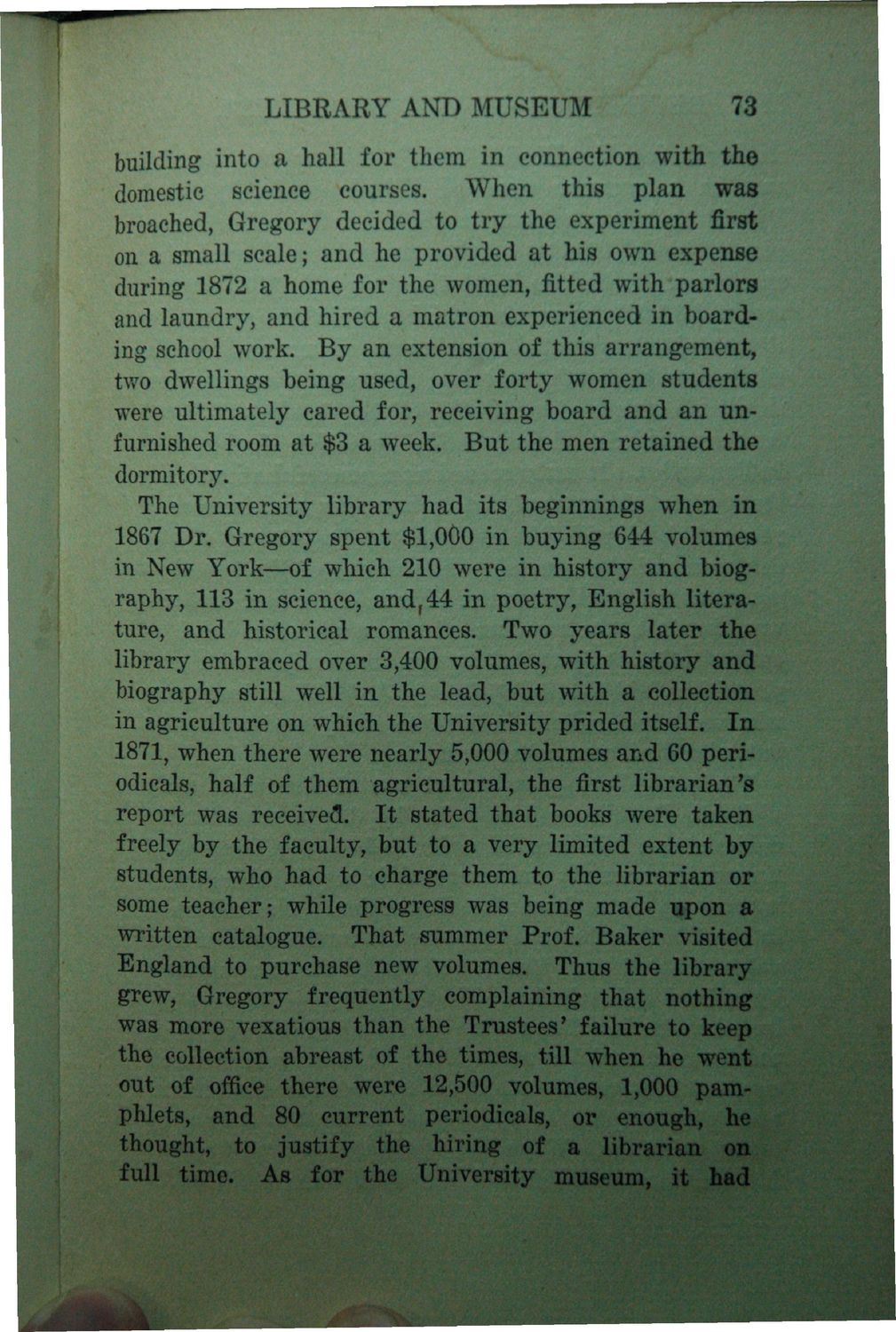| |
| |
Caption: Book - History of the University (Nevins)
This is a reduced-resolution page image for fast online browsing.

EXTRACTED TEXT FROM PAGE:
LIBEARY AND MUSEUM 73 building into a hall for them in connection with the domestic science courses. When this plan was broached, Gregory decided to try the experiment first on a small scale; and he provided at his own expense during 1872 a home for the women, fitted with parlors and laundry, and hired a matron experienced in boarding school work. By an extension of this arrangement, two dwellings being used, over forty women students were ultimately cared for, receiving board and an unfurnished room at $3 a week. But the men retained the dormitory. The University library had its beginnings when in 1867 Dr. Gregory spent $1,000 in buying 644 volumes in New York—of which 210 were in history and biography, 113 in science, and, 44 in poetry, English literature, and historical romances. Two years later the library embraced over 3,400 volumes, with history and biography still well in the lead, but with a collection in agriculture on which the University prided itself. In 1871, when there were nearly 5,000 volumes and 60 periodicals, half of them agricultural, the first librarian's report was received. It stated that books were taken freely by the faculty, but to a very limited extent by students, who had to charge them to the librarian or some teacher; while progress was being made upon a written catalogue. That summer Prof. Baker visited England to purchase new volumes. Thus the library grew, Gregory frequently complaining that nothing was more vexatious than the Trustees' failure to keep the collection abreast of the times, till when he went out of office there were 12,500 volumes, 1,000 pamphlets, and 80 current periodicals, or enough, he thought, to justify the hiring of a librarian on full time. As for the University museum, it had
| |